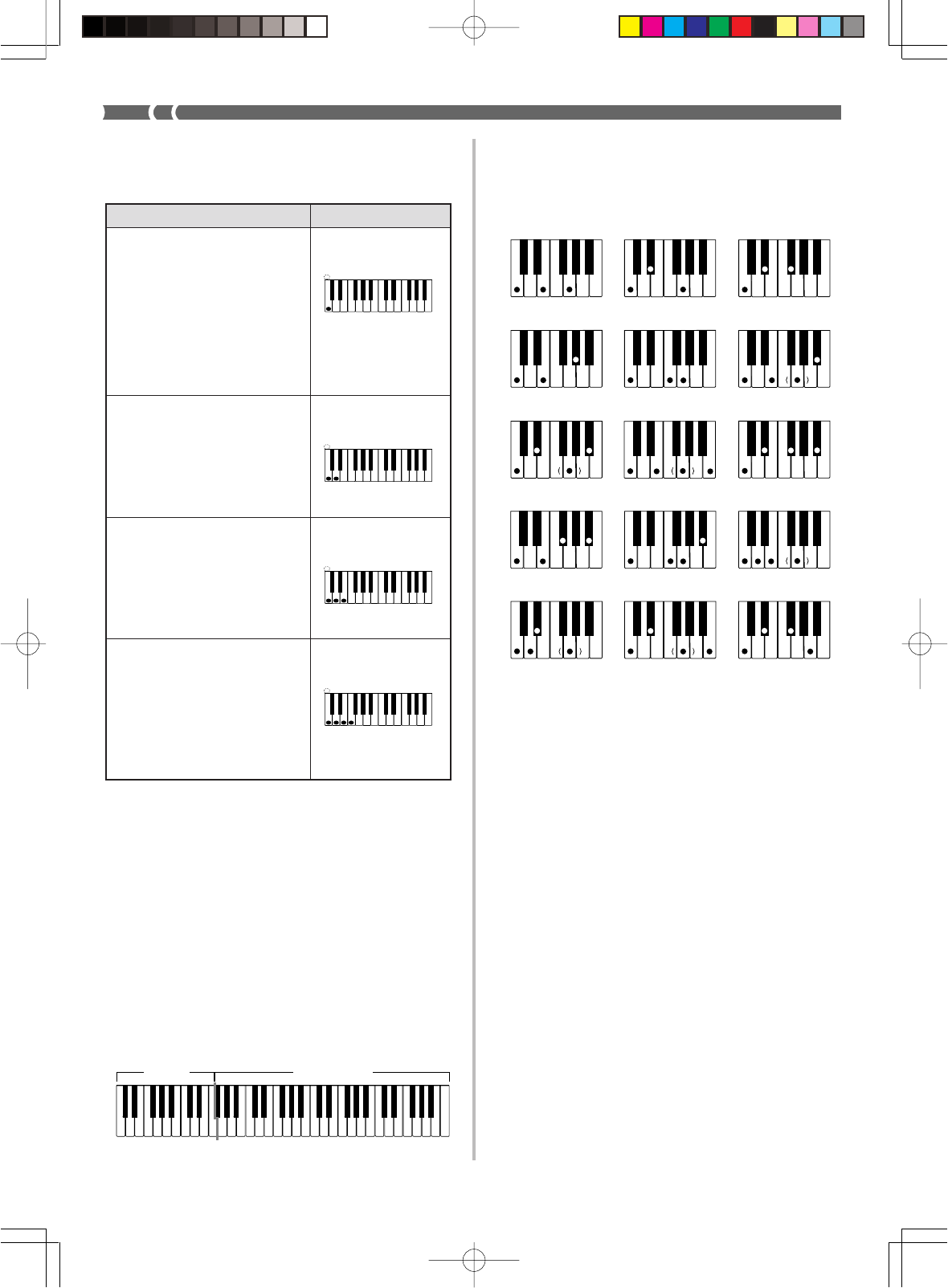
E-20
❚
NOTE
• It makes no difference whether you press black or white keys
to the right of a major chord key when playing minor and sev-
enth chords.
FINGERED
FINGERED provides you with a total of 15 different chord
types. The following describes the FINGERED “Accompa-
niment keyboard” and “Melody keyboard”, and tells you how
to play a C-root chord using FINGERED.
FINGERED Accompaniment Keyboard and Mel-
ody Keyboard
Major chords
Major chord names are marked
above the keys of the accompa-
niment keyboard. Note that the
chord produced when you press
an accompaniment keyboard
does not change octave, regard-
less of which key you use to play
it.
Minor chords (m)
To play a minor chord, keep the
major chord key depressed and
press any other accompaniment
keyboard key located to the right
of the major chord key.
Seventh chords (7)
To play a seventh chord, keep the
major chord key depressed and
press any other two accompani-
ment keyboard keys located to
the right of the major chord key.
Minor seventh chords (m7)
To play a minor seventh chord,
keep the major chord key de-
pressed and press any other three
accompaniment keyboard keys
located to the right of the major
chord key.
ExampleChord Types
Melody keyboard
Accompaniment
keyboard
625A-E-022A
Chord Types
CASIO CHORD accompaniment lets you play four types of
chords with minimal fingering.
See the “Fingered Chord Chart” on page A-4 for details on
playing chords with other roots.
*1:Inverted fingerings cannot be used. The lowest note is the
root.
*2:The same chord can be played without pressing the 5th
G.
❚
NOTE
• Except for the chords specified in note
*1
above, inverted fin-
gerings (i.e. playing E-G-C or G-C-E instead of C-E-G) will pro-
duce the same chords as the standard fingering.
• Except for the exception specified in note
*2
above, all of the
keys that make up a chord must be pressed. Failure to press
even a single key will not play the desired FINGERED chord.
❚
NOTE
• The accompaniment keyboard can be used for playing chords
only. No sound will be produced if you try playing single melo-
dy notes on the accompaniment keyboard.
C
Caug
*1
Cm7
*2
C7
5 *1
Cmadd9
*2
Cm
Csus4
Cmaj7
*2
C7sus4
CmM7
*2
Cdim
C7
*2
Cm7
5
Cadd9
*2
Cdim7
*1
C minor seventh (Cm7)
C
C
DE FF
#
E
#
G
A
AB
B
C
C
DE F
E
#
C seventh (C7)
C
C
DE FF
#
E
#
G
A
AB
B
C
C
DE F
E
#
C minor (Cm)
C
C
DE FF
#
E
#
G
A
AB
B
C
C
DE F
E
#
C
C
DE FF
#
E
#
G
A
AB
B
C
C
DE F
E
#
C Major (C)
CTK481_E18_21.p65 03.10.7, 2:58 PMPage 20 Adobe PageMaker 6.5J/PPC


















